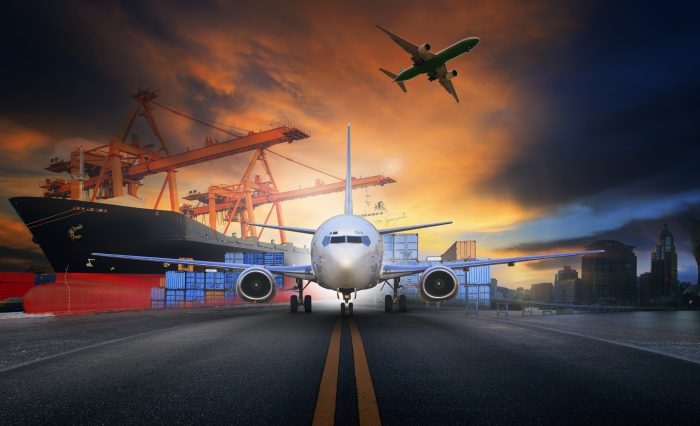In touring multiple facilities, ranging from package shipments to cold storage food service delivery to the e-commerce behemoth to 3PL organizations, it became clear that as many conversations that take place about labor costs and other daily concerns, the #1 concern across the board is transportation costs. The numbers support this sentiment. According to CSCMP, transportation costs are 65% of total logistics spend.
Logically, it also makes good sense. No matter your business, materials, parts sub-assemblies, and/or products need to arrive at your facility. Often, especially in industries such as aerospace, the parts make multiple trips around the area (unless you are unlucky enough to require sourcing outside of your local area) for outside processing services such as anodizing and painting. Lastly, every work-in-process part or finished good must go to the next stop along the way to the customer such as a final assembly customer, your distribution center, your customer’s distribution center or the end customer. That makes for quite a lot of transportation, often involving multiple modes of transport from air freight to ocean freight to rail to trucking.
Given these alarming statistics about transportation costs, the question becomes what can we do to proactively manage these costs as well as reduce the impact on the environment? After listening to several experts on these tours as well as experts from Georgia Tech, APICS (learn more about the critical importance of logistics in our APICS-IE CLTD, certified in logistics, transportation and distribution certificate program) and CSCMP SoCal (at the state of the industry event), a few ideas emerged.
- Collaborate with strange bedfellows: As recently published in an I’ve Been Thinking article, collaborating with strange bedfellows can achieve 1+1+1 = 25 minimally. In terms of transportation, there is no doubt maximizing the space used in your truck, container or plane is vital. Why not collaborate with another business to increase your utilization?
- Take the holistic or systems view: It is quite challenging to see the forest for the trees as the old slogan goes. We have all been there! I have worked with clients for extended period of time and found myself with this same issue, and so I have to deliberately shake it up so that I can maintain the systems or bird’s-eye view. For example, don’t worry about saving a few pennies on a non-essential element of your transportation infrastructure when you are missing the key point that your mix of modes of operation or something like that is costing you millions.
- Utilize technology that focuses in on the critical transportation factors: In every case (at every tour, event and in every conversation), leveraging technology where it makes sense came up. Certainly, artificial intelligence is the new craze since it has the potential to transform entire industries including logistics. However, robotics are being considered even in industries such as 3PL where they never were previously due to the nature of managing different customers and products. Of course, IoT is prevalent in the world of logistics and transportation as well as topics such as alternative fuels and automation. And what about the basics of a solid ERP system and TMS (transportation management system)? Don’t panic over the horror stories. Contact us if you want to overcome them.
- Be customer friendly: Interesting how often being customer friendly arises, no matter the industry or size company (small family owned to private equity backed to large complex organizations). With rising truck rates and a shortage of drivers, if you aren’t a preferred shipper, you might just be out of luck no matter how much you spend. What does it take to be a preferred shipper? It depends on your business, carriers, locations and more. However, it starts by thinking about what is important to your carrier; not you. Are they looking for flexibility? A quick turnaround time? Fast payment? Good treatment for their drivers?
Since transportation costs are 65% of your total logistics spend, at the very minimum, it requires further thought. With the vast amount of technology options available, it seems as though you should start with your foundation (your ERP system) and ensure it is stable. Once you have a scalable base, find the ‘right’ technology for your situation to maximize the value of your logistics infrastructure. However, remember the 80/20 goes back to people. What are you doing to develop strategic partnerships and to ensure you are customer friendly and a preferred shipper? Given the impact, don’t leave this to chance or make assumptions. We all like to think we are preferred but what can we do to take it an extra step further?



